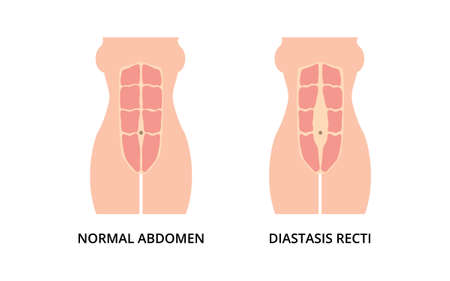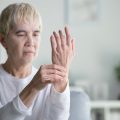Understanding Arthritis and the Impact of the British Climate
Arthritis is a common condition in the UK, affecting millions of people across all age groups. It primarily involves inflammation and stiffness of the joints, leading to pain, reduced mobility, and a significant impact on daily life. The most prevalent forms are osteoarthritis and rheumatoid arthritis, both of which can severely limit physical activity if not managed properly. In Britain, sufferers often report that their symptoms worsen in response to the climate. The UKs weather is famously damp, chilly, and unpredictable—conditions that can exacerbate joint pain and make starting an exercise routine feel especially daunting. Scientific studies suggest that low temperatures and high humidity can increase joint stiffness and discomfort, while sudden weather changes may lead to flare-ups. As such, understanding how these environmental factors interact with arthritis is crucial for anyone looking to safely embark on an exercise regimen within the unique context of the British climate.
Consulting Healthcare Professionals Before You Begin
Before embarking on any new exercise routine, particularly with arthritis in the often unpredictable British climate, it is crucial to seek professional guidance. Consulting healthcare professionals such as your GP, physiotherapist, or occupational therapist within the NHS helps ensure that any physical activity you undertake is both safe and tailored to your specific needs. The UKs NHS provides accessible pathways for people living with arthritis to receive expert advice, which is especially important given the potential for variable weather conditions to affect symptoms.
Why Professional Guidance Matters
Arthritis affects individuals differently, and what works for one person may not be suitable for another. British weather—damp, cold, or fluctuating—can exacerbate joint pain or stiffness. By consulting healthcare professionals, you benefit from an assessment of your medical history, current medications, and the severity of your arthritis. These experts can recommend exercises that are gentle on your joints and adapt routines to suit indoor environments during inclement weather.
The Roles of Different NHS Professionals
| Professional | Role in Your Exercise Journey |
|---|---|
| GP (General Practitioner) | Assesses overall health, refers to specialists, and approves safe exercise plans. |
| Physiotherapist | Designs personalised exercise regimes, demonstrates safe movements, and monitors progress. |
| Occupational Therapist | Advises on adapting daily activities and home environment to support joint health while staying active. |
Steps to Take Before Starting Exercise
- Book an appointment: Schedule a visit with your GP to discuss your intention to start exercising.
- Request a referral: If necessary, ask your GP for a referral to a physiotherapist or occupational therapist within the NHS.
- Prepare questions: List concerns about pain management, suitable exercise types, and how the British climate may impact your condition.
- Follow professional advice: Adhere strictly to recommendations on frequency, intensity, and type of exercises.
This collaborative approach ensures that you begin exercising with confidence, knowing your routine is medically approved and culturally adapted for the UK’s unique environmental considerations.
![]()
3. Choosing Suitable Activities for UK Conditions
When living with arthritis, selecting the right type of exercise is crucial, especially in the context of the variable British climate. The UKs frequent rain, cooler temperatures, and occasionally blustery weather mean that flexibility and creativity are essential when planning your physical activity. Below, we explore arthritis-friendly exercises that can be easily adapted to both local facilities and the typical British weather, ensuring you can stay active safely all year round.
Walking in Local Parks
Walking remains one of the most accessible forms of exercise for those with arthritis. The UK boasts a wealth of local parks and green spaces, many with well-maintained paths suitable for gentle strolls. Opt for flatter routes to minimise joint strain, and consider joining a local walking group for added motivation and community support. Remember to dress in layers and wear waterproofs during wetter months.
Swimming at Leisure Centres
Swimming is highly recommended for people with arthritis due to its low-impact nature. Most British towns offer public leisure centres equipped with heated pools, making swimming an excellent year-round option regardless of the weather outside. Water aerobics classes tailored for joint mobility are also commonly available and provide social benefits as well.
Yoga or Pilates at Home
On days when venturing out is less appealing—perhaps due to heavy rain or chilly winds—practising yoga or Pilates at home offers a practical alternative. These activities promote flexibility, balance, and gentle strengthening without putting undue pressure on the joints. There is an abundance of online resources and video tutorials featuring routines designed specifically for people with arthritis.
Adapting Activities to Suit Local Facilities
If you have access to a village hall, community centre, or even a sheltered garden space, these can serve as venues for indoor exercise sessions during inclement weather. Many communities also organise group fitness classes tailored for older adults or those managing chronic conditions like arthritis.
Navigating Typical British Weather
The unpredictable British climate need not be a barrier to regular exercise. Keep an eye on local forecasts and have indoor alternatives ready for rainy days. Waterproof clothing, non-slip footwear, and layered attire will help make outdoor activities more comfortable and safe throughout the changing seasons.
By thoughtfully choosing and adapting your activities to suit local conditions and facilities, you can maintain a safe and effective exercise routine that supports your health while accommodating both arthritis symptoms and the ever-changing British weather.
4. Dressing Appropriately for Safety and Comfort
Adapting your attire to the unpredictable British climate is essential when exercising outdoors with arthritis. Appropriate clothing not only enhances comfort but also plays a pivotal role in safeguarding joint health and preventing slips or chills. Below, practical guidance is offered on effective layering, choosing waterproofs, selecting suitable footwear, and prioritising visibility during dimmer days.
Layering for Warmth and Flexibility
The UK’s changeable weather necessitates a layered approach to clothing. Start with a moisture-wicking base layer to keep sweat away from your skin, followed by an insulating mid-layer such as fleece, and top off with a windproof and waterproof outer layer. This structure traps warmth while allowing you to adjust as temperatures fluctuate.
| Layer | Purpose | Recommended Fabrics |
|---|---|---|
| Base Layer | Moisture management | Merino wool, synthetic blends |
| Mid Layer | Insulation | Fleece, light wool |
| Outer Layer | Weather protection | Waterproof breathable fabrics (e.g., Gore-Tex) |
Selecting Waterproofs and Rain Gear
Given the frequency of rain across Britain, investing in quality waterproofs is crucial. Look for lightweight, breathable jackets and over-trousers that prevent water ingress without causing overheating. Adjustable cuffs and hoods further increase protection against sudden downpours.
Proper Footwear for Slippery Pavements
Pavements can become treacherously slick during wet or icy spells. Supportive trainers or walking shoes with non-slip soles provide necessary grip and stability, reducing the risk of falls—a particular concern for those managing joint pain. Consider options with cushioned insoles to further protect sensitive joints.
Shoe Features for Arthritis-Friendly Walking
| Feature | Benefit |
|---|---|
| Non-slip sole | Enhanced grip on wet surfaces |
| Cushioned insole | Shock absorption for sensitive joints |
| Ankle support | Prevents twisting injuries |
High-Visibility Gear for Darker Days
The British winter brings shorter days and frequent overcast conditions, making high-visibility accessories essential. Reflective vests, armbands, and even LED lights can make you more visible to drivers and cyclists, especially during early mornings or late afternoons when light levels are lowest.
Quick Tips:
- Select bright-coloured outer layers where possible.
- Add reflective strips to bags or clothing if dedicated hi-vis gear isn’t available.
- Carry a lightweight hat and gloves—essential for maintaining joint warmth in colder winds.
Dressing thoughtfully ensures both safety and comfort as you embark on outdoor exercise routines across Britain’s variable climate. Thoughtful choices not only help manage arthritis symptoms but also encourage consistency in physical activity throughout the year.
5. Warming Up, Cooling Down, and Joint Protection Strategies
Step-by-Step Tips for Safe Exercise Preparation
In the UK’s variable climate, it’s especially vital for people with arthritis to properly prepare their bodies before any physical activity. A well-structured warm-up not only helps ease your joints into movement but also reduces the risk of injury, which can be more common in cold, damp weather. Begin with five to ten minutes of gentle activity—such as marching on the spot indoors or taking a slow walk around your home. Focus on increasing blood flow to your muscles and joints; this is particularly important when outdoor temperatures are low or when rain and wind chill are factors.
The Importance of Gentle Stretches
Follow your initial warm-up with gentle stretching tailored to the areas most affected by arthritis. For instance, perform slow circular motions with your wrists and ankles or use a towel to assist with overhead stretches for your shoulders. The aim is not to push through pain but to gently encourage joint mobility and flexibility. In Britain’s cool, damp conditions, muscles may feel tighter, so take extra care and move within a comfortable range.
Cooling Down Effectively
After exercise, cooling down is just as crucial as warming up. Dedicate another five to ten minutes to gradually lower your heart rate and relax your muscles. This could include slower-paced walking followed by light stretching again. Cooling down helps prevent stiffness—a common complaint among those with arthritis, especially during colder months when muscles can tense quickly after exertion.
Using Supportive Equipment: Walking Aids and Braces
Don’t hesitate to use supportive equipment if needed. Walking aids like canes or Nordic walking poles provide stability on slippery pavements or uneven park paths typical in British towns and countryside settings. Braces or orthotic supports may help protect vulnerable joints during activity, reducing strain and enhancing confidence. Consult an NHS physiotherapist or occupational therapist for advice on the most suitable options for your needs and lifestyle.
Practical Joint Protection Strategies
Finally, always listen to your body and adapt exercises if you notice discomfort or increased pain. Opt for shoes with good grip to handle wet surfaces safely, and dress in layers that you can adjust as your body warms up or cools down. By integrating these joint protection strategies into your routine, you’ll find it easier to stay active throughout the year, regardless of Britain’s unpredictable weather.
6. Building a Consistent Routine with Local Support
Maintaining motivation to exercise, especially when living with arthritis in the ever-changing British climate, can be challenging. However, building a consistent routine becomes more achievable—and enjoyable—when you tap into the strong sense of community and local resources available across the UK.
Harnessing Community Classes
Local leisure centres, village halls, and sports clubs frequently offer gentle exercise classes tailored for people with arthritis or limited mobility. These sessions, such as aqua aerobics or chair-based yoga, are led by trained instructors familiar with the needs of participants and provide a welcoming environment to stay active. The social aspect of these classes not only fosters accountability but also helps combat feelings of isolation that can accompany long-term health conditions.
Joining Virtual Groups and Online Support
The unpredictability of British weather means it’s sensible to have alternatives for days when venturing outside is less appealing. Many charities and NHS-supported initiatives now offer virtual exercise classes or support groups. For example, Arthritis Action runs online exercise sessions and peer-support networks accessible from home. Joining such groups ensures you can maintain regular movement whatever the weather, whilst connecting with others facing similar challenges.
Getting Involved in Local Charity Initiatives
Participating in charity-led events or community walks not only supports valuable causes but also offers structured opportunities for gentle physical activity. National organisations like Arthritis Action and Versus Arthritis frequently host walks, workshops, and wellbeing days throughout the UK. Engaging in these initiatives can keep your routine fresh and purposeful while providing access to expert advice and shared experiences.
Staying Flexible with Your Routine
The key to long-term success is flexibility. British weather is famously fickle—from drizzle to downpour, plans may need quick adjustment. Have an indoor routine ready for wet days: simple stretching, resistance band exercises, or guided online classes can be just as effective as outdoor activities. By blending structured group participation with adaptable home-based options, you’ll find it easier to remain consistent without feeling pressured or discouraged by circumstances beyond your control.
Ultimately, building a sustainable exercise habit with arthritis in the UK involves combining personal adaptability with the collective strength found in local communities and national support networks. This integrated approach not only bolsters motivation but also enriches your overall wellbeing on your journey towards better joint health.


